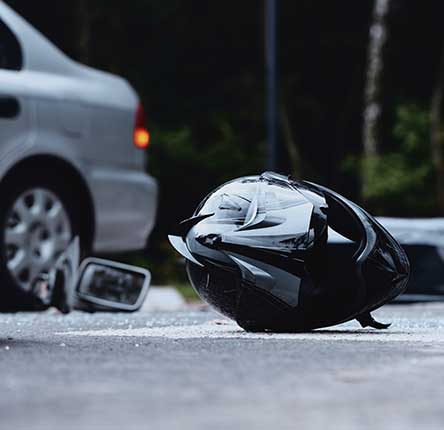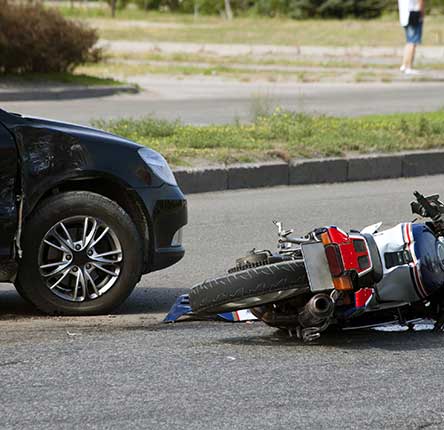The first individual attested for in modern history to ride a motorcycle was the son of Gottlieb Daimler, whose name was Paul. The machine used was called an Einspur which is also known as a “one track”. This first motorcycle ride took place on November 10, 1885, in Germany, near Stuttgart and is generally accepted as the first motorcycle ride; although there were several pioneers, who were inventors and engineers, that preceded Daimler. For the most part, steam engines powered by their cycles.
These innovative pioneers include:
Lucius Copeland
Copeland was a 19th-century inventor and engineer that exhibited one of the first motorized cycles called the Copeland steam bicycle. He demonstrated his steam-powered bicycle in 1884 at the Arizona Territorial Fair. Copeland also was the creator of the steam tricycle. Copeland’s tricycle could go as far as 30 miles in range and it took five minutes to gather enough steam to travel at 10 miles per hour. There were 200 of these Phaeton steamers that were mass-produced before Copeland retired in 1891; due to his concerns of not making enough money.
Louis-Guillaume Perreaux
Perreaux was a french engineer and inventor that presented a working motorcycle in 1869. Perreaux began by placing a miniature steam engine in a bicycle frame and obtained a patent for his design while he continued to improve his work until 1885. The motorcycle was known as the “steam velocipede” and it could reach up to 9 miles per hour.
Many inventors continued the work of Daimler and used internal combustion engines. These engineers and inventors include:
Siegfried Bettmann
Bettman is the founder of Triumph Motorcycle Company which produced its first motorcycle in 1902. Unlike past attempts to produce motorcycles, Bettmann relied on making a more solid machine that his company could take to the next level. The Triumph motorcycle was described as a reinforced bicycle with a 2.25 bhp Minerva engine. After a short time of using engines that were purchased the Triumph Motorcycle Company replaced the Minerva engines with engines made by the company. The Triumph Motorcycle became so popular that the British army ordered 100 motorcycles a short time before Britain waged war against Germany. By 1918 the Triumph Motorcycle Company would become Britain’s largest manufacturer of motorcycles.
Carl Oscar Hedstrom
Hedstrom was a renowned motorcycle designer, inventor, and co-founder of the Indian Motorcycle Manufacturing Company. While Hedstrom began to build a reputation as a skilled bicycle designer in Connecticut, he began to build bicycles that had gasoline-fueled engines. He would later call these gasoline-fueled bikes “Pacers”. At this point in time, the motorized bikes that people were familiar with were not very popular, as it was thought that they were poorly built. However, Hedstrom’s design became popular and known as being reliable. Later Hedstrom would meet a former cyclist named George Hendee of Massachusetts who was so impressed with Hedstrom’s design that he asked him to create a prototype that could then be used for mass production. This business venture would become the Indian Motorcycle Company. While this business venture was lucrative it was short-lived. Hedstrom resigned from the company in 1913 due to disagreeing with untrustworthy business practices in regards to inflating the stock price of the company. Hendee would also resign just three years later in 1916.
Max Fritz
Fritz was a mechanical engineer from Germany who was an expert in engine design. He played a very monumental role in creating engines that would lead to the founding of the automotive company BMW in 1917.
Harry Ricardo
Ricardo was a key player at the forefront of research and engine design in the development of the internal combustion engine. His research and designs were used in the first tanks and shaped the development of technological advances that would be accomplished later in history.
George Brough
Brough was an automobile and motorcycle manufacturer who created the Brough Superior automobiles and motorcycles. His Superior motorcycles were the first to be called superbikes and his motorcycles would ultimately live up to its name. Brough oversaw the production of 3,048 superbikes that were manufactured over 21 years. His superbikes were known to reach up to 100 miles per hour.
Arthur Davidson
Davidson was an entrepreneur and one out of four founders of the Harley-Davidson Company. In 1903 Arthur began working with William Harley who was building motorcycles in his shed and he had the idea of creating a motorcycle would take away the strenuous efforts of having to pedal. Arthur and his partners would later offer to support U.S. soldiers by producing motorcycles for the army; which in return made their motorcycles popular to troops who would return home and buy their own motorcycles.


